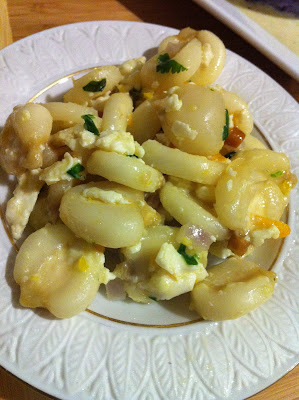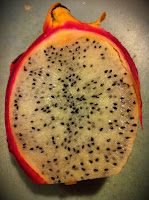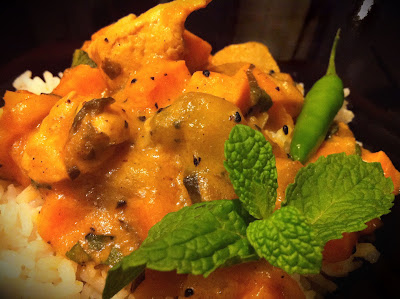As much as I complain about the cold, I can’t help but love the excuse to spend a day next to the stove. Yesterday, when the weather wasn’t so frostbitey, I planned in advance and bought the ingredients I needed to make a lovely slow-cooked beef stew.
This recipe makes a lot—and by “a lot,” I mean “Hey, East Coast, I’ve got enough for all of you!” Nah, just kidding—but this recipe definitely yields enough for 8-10 cold, hungry people! And it has plenty of healthy vegetables, which I think makes up for the fact that bacon fat is the key to the best flavor.
Beef Stew with Bacon & Vegetables
4-5 slices of thick-cut streaky bacon, sliced into ½” pieces
1.5 lbs. chuck steak, cut into bite-sized pieces
1 large onion, diced
3 leafy stalks celery, diced, leaves set aside
3-4 carrots, diced
3 juicy tomatoes, diced
2-3 c. dry red wine
1 32-oz. box organic low-sodium beef broth*
1-2 turnips, diced
3-4 red potatoes, diced
1 large bunch kale, ribs removed, leaves torn into pieces
1 t. dried thyme (or half the amount fresh)
1 t. crumbled dried sage leaves (or 3 fresh leaves, minced)
½ t. ground ginger
½ t. garlic powder
1 lb. green beans, sliced into 1-inch lengths
Smoked sea salt, to taste
Cracked black pepper, to taste
Before you even start chopping, make sure you have a huge pot (I used my 6.75 quart Le Creuset risotto pot). Otherwise, you’re screwed.
 |
| Just before adding the liquid |
Next, add the tomatoes (I added a few yellow cherry tomatoes, as you can see in the photo) and 1 cup of the wine. Turn the heat to high, and cook until the wine has reduced and most of the liquid has evaporated.
Now, add one more cup of wine and the beef broth, the turnips, potatoes, and kale, and the thyme, sage, ginger, and garlic. Reduce heat to medium-low and cover. Cook for 30 minutes, stirring occasionally.
Once the kale is completely wilted, add the green beans. If it seems dry, add the remaining wine (if you don’t need to add it, you should probably drink it). Cook for about 5 minutes until the green beans are cooked, then add the smoked sea salt and the cracked pepper. Give it a few good stirs until it is well-blended, then serve piping hot. This dish will stick to your bones!
* If you use pre-made beef broth, make sure to use low-sodium, and preferably organic. Of course, if you have your own beef broth, even better!
 |
| Not the prettiest, but it's wicked good! |
















































